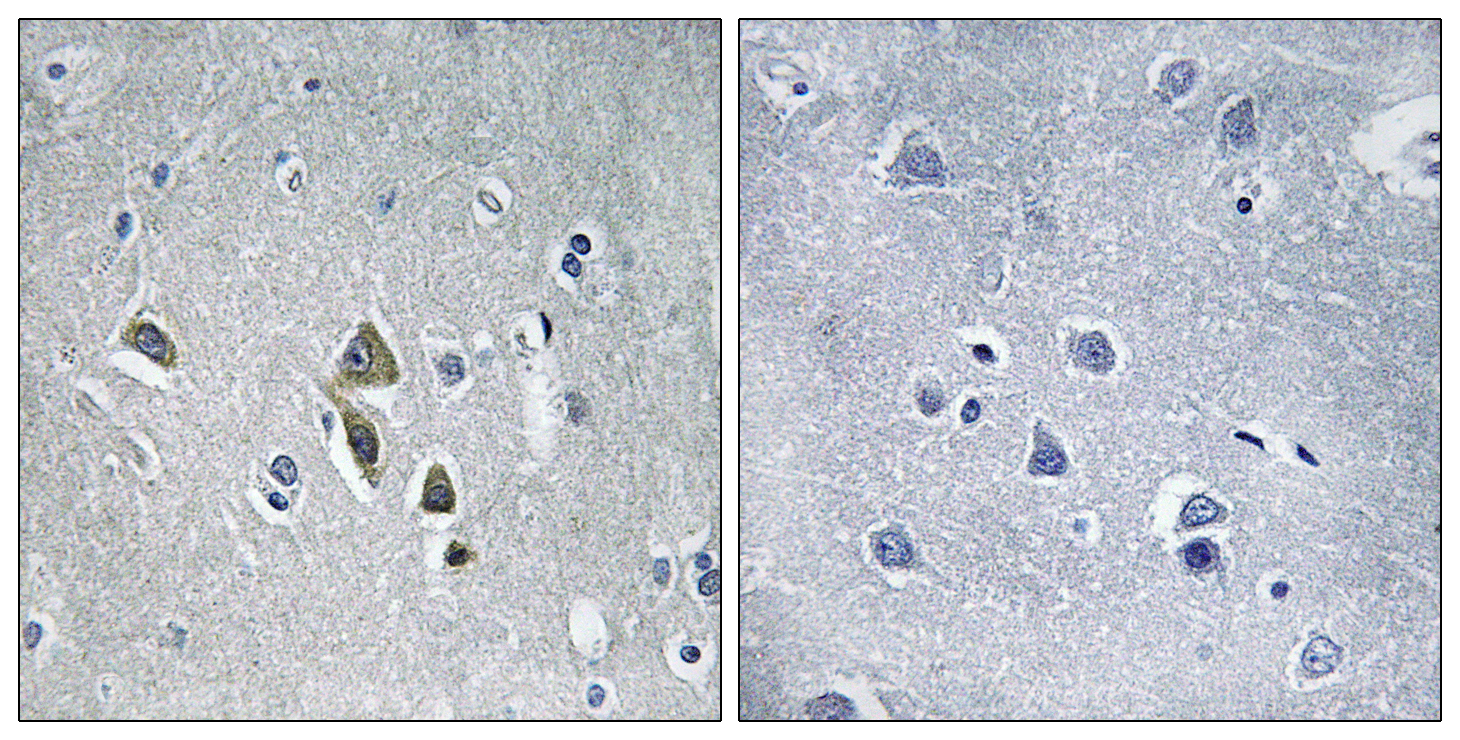AZ1 Polyclonal Antibody
- Catalog No.:YT0427
- Applications:WB;IHC;IF;ELISA
- Reactivity:Human;Mouse;Rat
- Target:
- AZ1
- Gene Name:
- OAZ1
- Protein Name:
- Ornithine decarboxylase antizyme 1
- Human Gene Id:
- 4946
- Human Swiss Prot No:
- P54368
- Mouse Gene Id:
- 18245
- Mouse Swiss Prot No:
- P54369
- Rat Gene Id:
- 25502
- Rat Swiss Prot No:
- P54370
- Immunogen:
- The antiserum was produced against synthesized peptide derived from human OAZ1. AA range:14-63
- Specificity:
- AZ1 Polyclonal Antibody detects endogenous levels of AZ1 protein.
- Formulation:
- Liquid in PBS containing 50% glycerol, 0.5% BSA and 0.02% sodium azide.
- Source:
- Polyclonal, Rabbit,IgG
- Dilution:
- IHC 1:100 - 1:300. ELISA: 1:40000,WB 1:500-2000. IF 1:50-200
- Purification:
- The antibody was affinity-purified from rabbit antiserum by affinity-chromatography using epitope-specific immunogen.
- Concentration:
- 1 mg/ml
- Storage Stability:
- -15°C to -25°C/1 year(Do not lower than -25°C)
- Other Name:
- OAZ1;OAZ;Ornithine decarboxylase antizyme 1;ODC-Az
- Molecular Weight(Da):
- 25kD
- Background:
- The protein encoded by this gene belongs to the ornithine decarboxylase antizyme family, which plays a role in cell growth and proliferation by regulating intracellular polyamine levels. Expression of antizymes requires +1 ribosomal frameshifting, which is enhanced by high levels of polyamines. Antizymes in turn bind to and inhibit ornithine decarboxylase (ODC), the key enzyme in polyamine biosynthesis; thus, completing the auto-regulatory circuit. This gene encodes antizyme 1, the first member of the antizyme family, that has broad tissue distribution, and negatively regulates intracellular polyamine levels by binding to and targeting ODC for degradation, as well as inhibiting polyamine uptake. Antizyme 1 mRNA contains two potential in-frame AUGs; and studies in rat suggest that alternative use of the two translation initiation sites results in N-terminally distinct protein isoforms
- Function:
- alternative products:A ribosomal frameshift occurs between the codons for Ser-68 and Asp-69. An autoregulatory mechanism enables modulation of frameshifting according to the cellular concentration of polyamines,function:Binds to, and destabilizes, ornithine decarboxylase which is then degraded. Also inhibits cellular uptake of polyamines by inactivating the polyamine uptake transporter.,similarity:Belongs to the ODC antizyme family.,
- Subcellular Location:
- nucleus,cytoplasm,cytosol,
- Expression:
- Brain,Fibroblast,Lymphoma,
CD38 affects the biological behavior and energy metabolism of nasopharyngeal carcinoma cells. INTERNATIONAL JOURNAL OF ONCOLOGY Int J Oncol. 2019 Feb;54(2):585-599 WB Human 1:1000 5-8F cell
- June 19-2018
- WESTERN IMMUNOBLOTTING PROTOCOL
- June 19-2018
- IMMUNOHISTOCHEMISTRY-PARAFFIN PROTOCOL
- June 19-2018
- IMMUNOFLUORESCENCE PROTOCOL
- September 08-2020
- FLOW-CYTOMEYRT-PROTOCOL
- May 20-2022
- Cell-Based ELISA│解您多样本WB检测之困扰
- July 13-2018
- CELL-BASED-ELISA-PROTOCOL-FOR-ACETYL-PROTEIN
- July 13-2018
- CELL-BASED-ELISA-PROTOCOL-FOR-PHOSPHO-PROTEIN
- July 13-2018
- Antibody-FAQs
- Products Images

- Immunohistochemistry analysis of paraffin-embedded human brain tissue, using OAZ1 Antibody. The picture on the right is blocked with the synthesized peptide.



